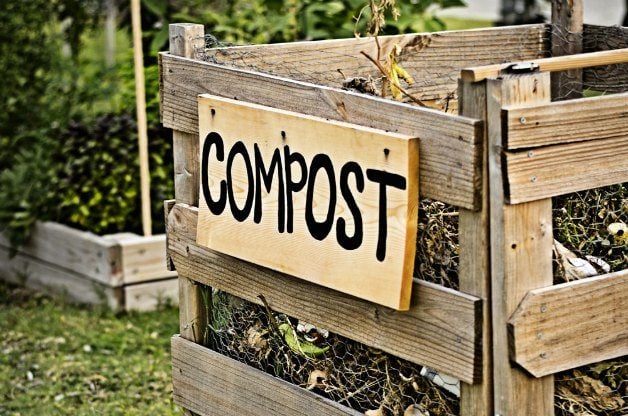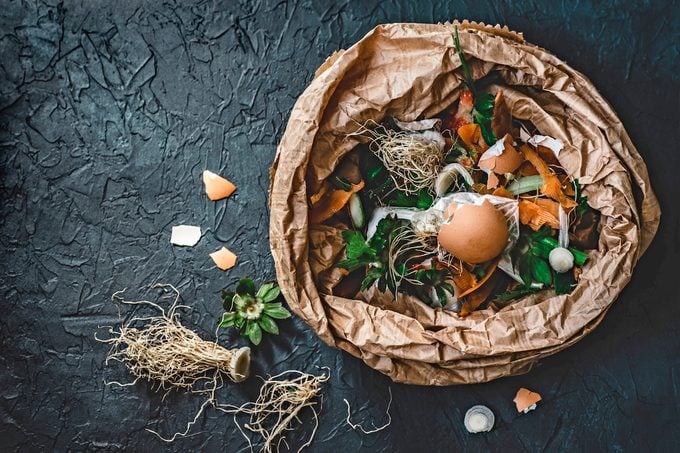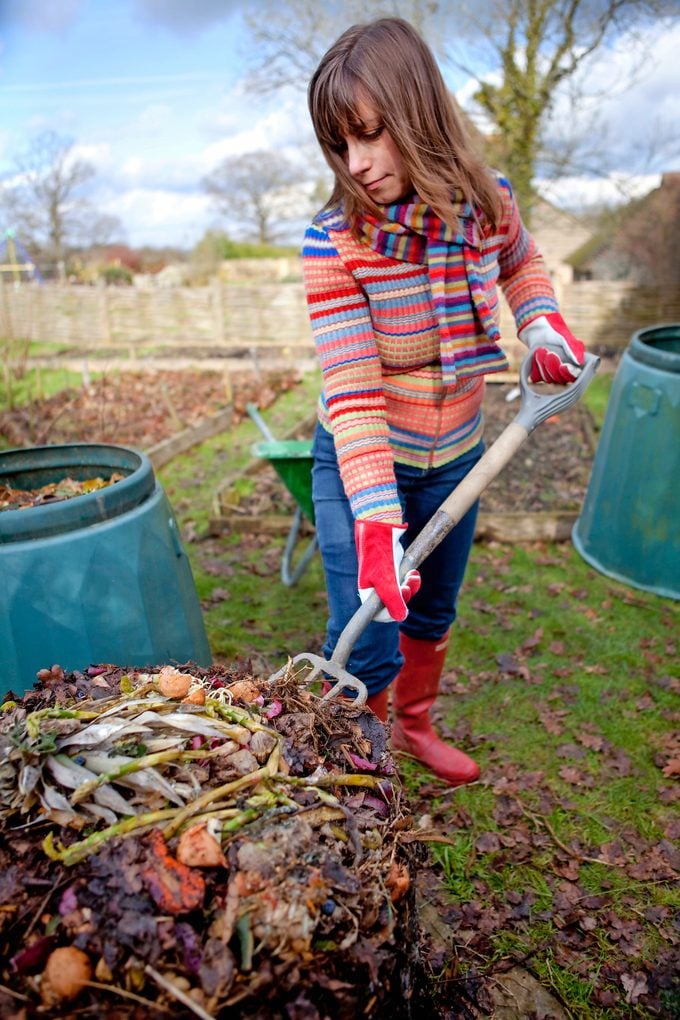Composting Basics: How to Make Compost
Updated: Nov. 28, 2023
Learn how to make compost and keep composting in winter, how often to turn compost, and get the ratio for green and brown ingredients.
Our editors and experts handpick every product we feature. We may earn a commission from your purchases.

Compost is a fantastic way to give your plants a nutritional boost. And although maintaining a batch is second nature to some gardeners during the growing season, most take a break in winter. But composting doesn’t have to stop when the mercury drops. “It’s perfectly fine to compost throughout the entire year. It is realistic for most gardeners if they pay attention to the compost bin on a regular basis,” says composting expert Beth Clawson, an educator with the Michigan State University Extension. “Composting still occurs even in the coldest months—it just occurs at a much slower rate, as different organisms are active and act more slowly.” Here’s how to make compost year-round.
Step 1: Getting Started Making Compost
Consider both aesthetics and function as you look for an area in your yard to store compost. The area should be convenient for adding materials and removing the compost. But you don’t want it to detract from the beauty of your (or your neighbor’s) landscape. Make sure the pile is located on a level, well-drained area. Also, locate the pile close to the garden hose so you can moisten it during dry periods.
Some people build their compost piles on raised planks or platforms. “It’s not necessary, though—compost can be built straight on the ground,” Beth says. “There is no need to prop it up on anything unless you want to.”
Aim for a 3-by-3-by 3-foot pile at minimum. Bigger is better for generating some heat, especially in winter. If you have an active compost heap and you turn it regularly and keep it hot, the pile won’t freeze and will continue to compost at a reasonable rate, Beth says. She adds, “It is very common to see compost piles steaming in the middle of winter. You must be willing to go out in your coat and boots and do the work.”
Learn how to build a DIY compost bin.
Step 2: Water and Shelter
Composting works in both sun and shade, but warm sunlight speeds up the decomposition process. Beth recommends keeping compost out of wind and sun by either placing your bin in a shadier spot or draping it with a cover. “Another thing you should keep in mind is to always keep compost moist,” Beth says. “It’s the moisture that allows organisms to live and it’s the organisms, like bacteria, microbes and insects, that do the work.”
Drainage is just as important. Poorly drained sites result in waterlogged piles that decompose slowly and tend to smell bad. If drainage is an issue, build your pile on top of a screen-covered wood pallet. You also can dig a shallow hole and lay wood or metal supports across it to hold screening. Then set the pile on top of the screen.
Learn more about getting started with vermicomposting.
Step 3: Compost Layers

Make a pile using the ratio of 4 parts brown material, such as straw, leaves or shredded newspaper, to 1 part green, which could include kitchen scraps, coffee grounds and tea bags. Layer the materials and toss in compost from a friend or a few shovels’ worth of soil to introduce more beneficial microbes. Add sticks, corn cobs and other bulky materials to increase circulation.
Psst—check out the fall garden chores you should never skip.
Step 4: How Often to Turn Compost

Every time you add material, mix it with a garden fork. Be sure to move less decomposed matter to the center of the pile. Also, poke air holes into the compost pile with a broom handle. A compost chimney of PVC pipe with several holes drilled in it also works well. Just stack your materials around the pipe.
Learn everything you need to know about mulch.
Step 5: How Long Does It Take to Make Compost?
It can take 3 months to 2 years to make finished compost. The more attention you give the pile (frequent turnings, proper ingredients, maintaining proper moisture, etc.), the faster it breaks down. When the composting process is finished, the dark rich treasure at the bottom will crumble in your hands and help your garden thrive.
Discover 25 secret garden tips we learned from grandma.
Passive Composting in Winter
If composting in cold weather seems like too much work, Beth Clawson, an expert with Michigan State University Extension, offers a more laid-back approach. “I give it a good turn in the late fall, add scraps and a topping of leaves and grass saved from the summer I set aside for that purpose, and turn again in the early spring to get it going again,” she says. “It takes longer for a finished product, but I am not in a hurry.”
Here’s how to prepare your garden for winter in two days.
Compost Green Brown Ratio
“Equal parts of green and brown help to break the compost down” is a good basic how-to gardening guide. If your compost has an ammonia odor, you need more carbon-rich brown debris. If it isn’t decomposing fast enough, you can add more nitrogen-rich green debris. Here are common sources of green and brown debris, and the ingredients you should never add to your pile.
Green Waste (Nitrogen)
- Fruit wastes
- Spent annuals
- Grass clippings (free of weedkillers)
- Manure
- Seaweed and kelp
- Vegetable peelings
- Coffee grounds
Brown Waste (Carbon)
- Cornstalks and cobs
- Evergreen needles
- Paper
- Sawdust and wood chips
- Straw and hay
- Tree leaves
What NOT to Compost
- Disease- and insect-infested plants
- Charcoal ashes
- Fabric
- Grass clippings treated with weed killer
- Meat, fish, bones, egg whites or yolks, and fats
- Pet, bird and human waste
- Perennial weeds that can take root in the compost (bindweed, quack)
- Weeds gone to seed
- Invasive weeds
Next, check out 7 tips for growing a healthy lawn.
